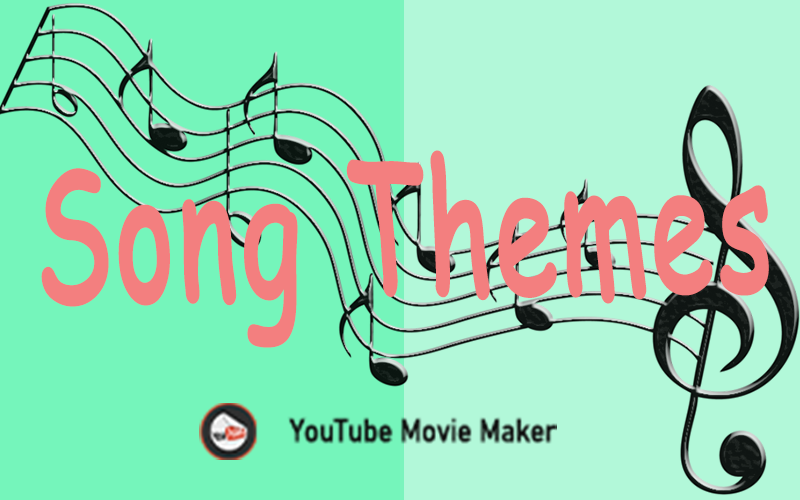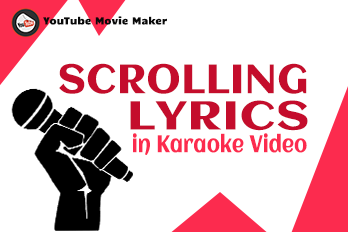So if you are writing a song about the hard things in life, and you may try to find some words that rhyme with “difficulty”, “sad” or “fight”. What are the great choices? The obvious matches may be words with the same end rhyme, such as “faculty”, “fad” or “bright”. If you think these words deeply, you’ll find that both of them fit into the picture of a hard life.
But how can we find words that both rhyme and fit into the story that you want to tell in music?
In this article, we’ll explore several common types of rhymes that most songwriters are using generally. Each of them can benefit you a lot with countless inspirations in the process of writing lyrics.
Why we use rhymes in songs?
Compared with the prose, song lyrics are more close to poetry which has rhymes. However, with the change of people’s aesthetic in music, rhymes seem not so necessary in lyrics.
But we still use it and talk about it so frequently?
Rhyme has its beauty that can not be replaced and ignored.
The rhythm sensation that comes from the rhymes in the same place of different lines creates strength.
The rhyme schemes refer to rhymes in lyrics that come in patterns, which mostly apply the end rhymes to define the structure of the song. The end words rhyme each other that are given letters to different rhymes. Two lines with the same letter rhyme the same. The first line is A, the second is B, and so on. If the line doesn’t rhyme, it’s given an X.
Common Rhyme Schemes

AAA rhyme, means rhyming at the end of each line, which we can see in“7 Years” by Lukas Graham.
“It was a big big world but we thought we were bigger
Pushing each other to the limits we were learning quicker
By eleven smoking herb and drinking burning liquor
Never rich so we were out to make that steady figure”
Though the AAAA rhyme scheme keeps the lyrics organized and rhythmical, the overuse of it in the whole song seems to be mechanical and sounds unnatural. To avoid this, we can rhyme with two words instead of one, as the ABAB form.

In a verse equal or more than four lines, ABAB, the couplets, means that the first line rhymes with the third, while the second rhymes with the fourth. We can find an example of it in the old famous song “I’ll be there for you” by The Rembrandts.
“I’ll be there for you
when the rain starts to pour.
I’ll be there for you
like I’ve been there before.
I’ll be there for you
’cause you’re there for me too.”

In an AABB alternate rhyme scheme, the first line rhymes with the second, while the third rhymes with the fourth. We can see it in Adele’s “Someone Like You”.
“Never mind, I’ll find someone like you
I wish nothing but the best for you
Don’t forget me, I beg, I remember you said
Sometimes it lasts in love, but sometimes it hurts instead”

The ABBA, the envelope style rhyme scheme, refers to the first line rhymes with the fourth while the second and the third rhyme the same. We can find an example in Lost Frequencies’s “Reality”.
“Stop claiming what you own, don’t think about the show
We’re all playing the same game, waiting on our loan
We’re unknown and known, special and a clone
Hate will make you cautious, love will make you glow”
Although the common types are often-used, you’ll regret if you overlook the relative freedom of XAXA, AXXA, or AAXA schemes.
Rhyme Schemes with “X”

When only line 2 and line 4 or line 1 and line 3 rhyme in a four-line verse, we call this type of rhyming scheme the XAXA. You can find it in James Blunts’s“You’re Beautiful”.
“Most of my boys are with me
Some are still out seeking glory
And some I had to leave behind
My brother I’m still sorry”
“My life is brilliant
My love is pure
I saw an angel
Of that I’m sure
She smiled at me on the subway
She was with another man
But I won’t lose any sleep on that
‘Cause I’ve got a plan“

XAAA. AXAA, AAXA and AAAX are the variations of the rhyme schemes of AAAA. Each of them has one line that doesn’t rhyme with the others. An example of this can be found in Michael Jackson’s“Beat It”.
AAAX
They Told Him Don’t You Ever Come Around Here
Don’t Wanna See Your Face, You Better Disappear
The Fire’s In Their Eyes And Their Words Are Really Clear
So Beat It, Just Beat It
You Better Run, You Better Do What You Can
Don’t Wanna See No Blood, Don’t Be A Macho Man
You Wanna Be Tough, Better Do What You Can
So Beat It, But You Wanna Be Bad
They are good solutions to the mechanical and unnatural monorhyme scheme.

The XXXX form refers to the songs without end rhyme. It demonstrates that rhyme is not necessary for songwriting. Sometimes, these songs use internal rhyming which means the rhyme words in the middle part of each line. So you don’t have to worry if your verse or chorus has no rhyme, and you needn’t create some deliberately by sacrificing the meaningful lyrics. Just focus on the rhythm and feel of this section. And then repeat the XXXX form in the next verse. We take the “Break Away” by Kelly Clarkson as an example.
“I’ll spread my wings and I’ll learn how to fly
though it’s not easy to tell you goodbye
gotta take a risk
take a chance
make a change
and breakaway
Out of the darkness and into the sun
but I won’t forget the place I come from
I gotta take a risk
take a chance
make a change
and breakaway”
Of course, you can come up with a great many possibilities of different rhyme schemes based on the existed rhyme schemes.
Always remember that never rhyme for rhyming. Rhyme should come after the meaning.



